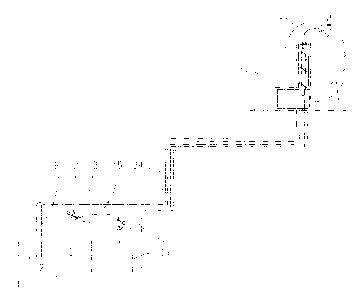Une partie des informations de ce site Web a été fournie par des sources externes. Le gouvernement du Canada n'assume aucune responsabilité concernant la précision, l'actualité ou la fiabilité des informations fournies par les sources externes. Les utilisateurs qui désirent employer cette information devraient consulter directement la source des informations. Le contenu fourni par les sources externes n'est pas assujetti aux exigences sur les langues officielles, la protection des renseignements personnels et l'accessibilité.
L'apparition de différences dans le texte et l'image des Revendications et de l'Abrégé dépend du moment auquel le document est publié. Les textes des Revendications et de l'Abrégé sont affichés :
| (12) Demande de brevet: | (11) CA 2482264 |
|---|---|
| (54) Titre français: | METHODE ET DISPOSITIF DE REFRIGERATION DES BOISSONS A LA PRESSION |
| (54) Titre anglais: | METHOD AND APPARATUS FOR CHILLING DRAUGHT BEVERAGES |
| Statut: | Réputée abandonnée et au-delà du délai pour le rétablissement - en attente de la réponse à l’avis de communication rejetée |
| (51) Classification internationale des brevets (CIB): |
|
|---|---|
| (72) Inventeurs : |
|
| (73) Titulaires : |
|
| (71) Demandeurs : |
|
| (74) Agent: | DIMOCK STRATTON LLP |
| (74) Co-agent: | |
| (45) Délivré: | |
| (22) Date de dépôt: | 2004-09-23 |
| (41) Mise à la disponibilité du public: | 2006-03-23 |
| Licence disponible: | S.O. |
| Cédé au domaine public: | S.O. |
| (25) Langue des documents déposés: | Anglais |
| Traité de coopération en matière de brevets (PCT): | Non |
|---|
| (30) Données de priorité de la demande: | S.O. |
|---|
The invention described as a booster, provides for a means to chill a draught
beverage at
a point between its storage container and dispensing faucet. The Booster is
comprised of
an enclosed tank, which contains a heat exchange mechanism and a beverage
storage
reservoir. Two cooling liquid lines are attached to the Booster. One of these
cooling
liquid lines provides for the flow of cooling liquid into the Booster while
the other
cooling liquid line provides for the flow of cooling liquid from the Booster.
The cooling
liquid enters the Booster and flows over the beverage storage reservoir prior
to flowing
over and into the heat exchange mechanism. The cooling liquid exits directly
from the
heat exchange mechanism to an internal line that is connected to an exit port
of the
Booster. Two beverage lines are also attached to the Booster. One beverage
line brings
the beverage into the Booster while the other allows for the beverage to exit
from the
Booster. The beverage, upon entering the Booster, flows directly into the heat
exchange
mechanism whereupon the cooling liquid chills it. The beverage flows from the
heat
exchange mechanism into the beverage storage reservoir where it is further
chilled and
maintained at the desired temperature.
Note : Les revendications sont présentées dans la langue officielle dans laquelle elles ont été soumises.
Note : Les descriptions sont présentées dans la langue officielle dans laquelle elles ont été soumises.

2024-08-01 : Dans le cadre de la transition vers les Brevets de nouvelle génération (BNG), la base de données sur les brevets canadiens (BDBC) contient désormais un Historique d'événement plus détaillé, qui reproduit le Journal des événements de notre nouvelle solution interne.
Veuillez noter que les événements débutant par « Inactive : » se réfèrent à des événements qui ne sont plus utilisés dans notre nouvelle solution interne.
Pour une meilleure compréhension de l'état de la demande ou brevet qui figure sur cette page, la rubrique Mise en garde , et les descriptions de Brevet , Historique d'événement , Taxes périodiques et Historique des paiements devraient être consultées.
| Description | Date |
|---|---|
| Demande non rétablie avant l'échéance | 2006-12-27 |
| Inactive : Morte - Aucune rép. à lettre officielle | 2006-12-27 |
| Réputée abandonnée - omission de répondre à un avis sur les taxes pour le maintien en état | 2006-09-25 |
| Demande publiée (accessible au public) | 2006-03-23 |
| Inactive : Page couverture publiée | 2006-03-22 |
| Inactive : Renseign. sur l'état - Complets dès date d'ent. journ. | 2006-02-15 |
| Inactive : Abandon. - Aucune rép. à lettre officielle | 2005-12-28 |
| Inactive : CIB en 1re position | 2004-12-22 |
| Inactive : Lettre de courtoisie - Preuve | 2004-11-16 |
| Demande reçue - nationale ordinaire | 2004-11-10 |
| Exigences de dépôt - jugé conforme | 2004-11-10 |
| Inactive : Certificat de dépôt - Sans RE (Anglais) | 2004-11-10 |
| Date d'abandonnement | Raison | Date de rétablissement |
|---|---|---|
| 2006-09-25 |
| Type de taxes | Anniversaire | Échéance | Date payée |
|---|---|---|---|
| Taxe pour le dépôt - petite | 2004-09-23 |
Les titulaires actuels et antérieures au dossier sont affichés en ordre alphabétique.
| Titulaires actuels au dossier |
|---|
| ICEFLOE TECHNOLOGIES INC. |
| Titulaires antérieures au dossier |
|---|
| MARKUS HESS |
| PHIL CARTER |
| SAM CHIUSOLO |